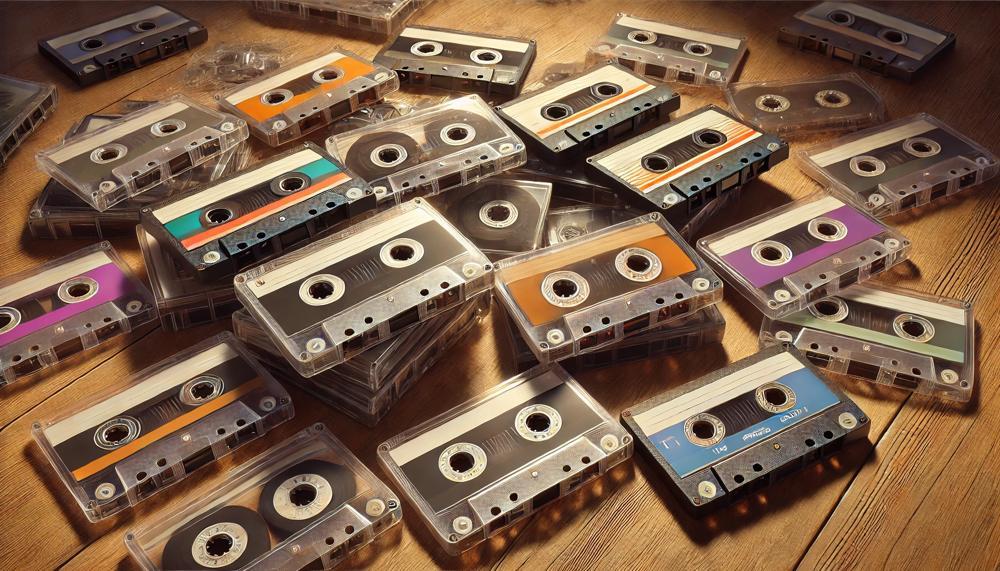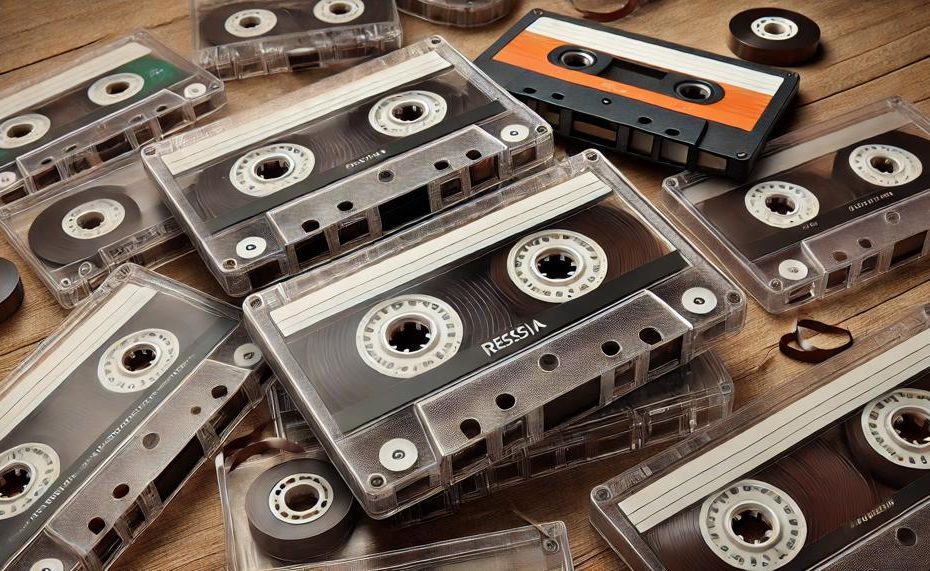Cassette tapes, once the pinnacle of audio technology, now often find themselves collecting dust in attics and basements. If you’re wondering what to do with these relics of the past, here’s how to dispose of them properly. Usable cassette tapes can be given a second life by donating or selling them.
Websites like the NYS Reuse Locator Map can help you find local donation spots. For those that are beyond repair, the sad truth is they should be placed in the trash. To maximize their lifespan, consider dropping them off at libraries or thrift stores. This simple act can help reduce waste and give your tapes a chance to be enjoyed once more.
Key Takeaways:
- Donate or sell usable cassette tapes.
- Use the NYS Reuse Locator Map for local donation locations.
- Dispose of unusable tapes in the trash.
- Extend the life of old tapes by dropping them off at libraries or thrift stores.
Contents
How to recycle VHS and cassette tapes
Disposing of VHS and cassette tapes in an environmentally-friendly manner requires careful consideration due to the hazardous materials they contain. Here are several methods to ensure proper disposal:
| Method | Description | Examples/Links |
| Donate or Sell | Donate tapes to thrift stores, libraries, or sell online | eBay, Local Thrift Stores |
| Creative Projects | Use tapes in DIY crafts or offer to art schools | |
| Specialized Recycling | Send tapes to companies that recycle electronic waste | GreenCitizen |
| Hazardous Waste Disposal | Follow local guidelines for disposing of hazardous waste | Local Waste Management Facility |
| Repurposing Materials | Use plastic cases and magnetic tape for other purposes | DIY Craft Projects |
| Waste-to-Energy | Burn tapes in specialized incineration plants | Local Incineration Facilities |
What are VHS tapes made from?
VHS tapes are primarily composed of several materials, each serving a specific function. The main components are:
- Plastic Shell: The outer casing of VHS tapes is made from polypropylene, a durable and versatile plastic known for its robustness and resistance to various chemical reactions.
- Magnetic Tape: The actual tape inside is composed of Mylar, a brand name for biaxially-oriented polyethylene terephthalate (BoPET). This material provides a stable base for the magnetic layer, ensuring longevity and reliability in data storage.
- Magnetic Coating: The surface of the Mylar tape is coated with a magnetic material, typically ferric oxide (Fe2O3) or sometimes chromium dioxide (CrO2). This layer is crucial for recording and storing video and audio signals.
- Lubricants and Binders: The magnetic coating also contains binders and lubricants to ensure smooth operation and to prevent the tape from sticking or breaking during playback and recording.
- Other Components: VHS tapes also include various small metal and plastic parts such as screws, springs, and spindles, which are necessary for the mechanical operation of the tape within a VCR.
Why is it difficult to recycle cassette and VHS tapes?
Cassette and VHS tapes pose a significant challenge for recycling due to their complex construction and materials. These tapes consist of a combination of plastics, metals, and magnetic materials. The plastic casing is often made from various types of plastics, while the tape itself is Mylar coated with iron oxide.
Disassembling these components is labour-intensive, and separating the different materials for proper recycling is even more intricate.
Moreover, the market for recycled materials from these tapes is minimal, making it economically unfeasible for many recycling programs to handle them.
Environmental Challenges of Recycling Cassette and VHS Tapes
Recycling cassette and VHS tapes is fraught with environmental challenges. These tapes are made from a mix of plastic, Mylar, and metal, each requiring different recycling processes.

The breakdown of these materials often releases toxic chemicals into the environment if not handled correctly.
Additionally, the magnetic coatings and lubricants can contaminate other recyclable materials, making the entire recycling batch unusable.
Importance of Proper Disposal
Proper disposal of cassette and VHS tapes is crucial to prevent environmental harm. When these tapes end up in landfills, the plastics and metals can take hundreds of years to decompose, leaching harmful chemicals into the soil and groundwater.
Incinerating them releases toxic fumes, further polluting the air. Proper disposal methods include using specialized recycling programs like those offered by GreenDisk, which ensure that these materials are recycled responsibly.
| Environmental Challenges | Description | Impact |
| Complex Material Composition | Combination of plastics, Mylar, metals, and magnetic coatings | Difficulty in separating and recycling materials |
| Toxic Chemical Release | Breakdown of materials can release harmful substances | Contamination of soil, water, and air |
| Economic Feasibility | Low market value for recycled tape materials | Limited recycling program availability |
Can you reuse VHS and cassette tapes?
Absolutely, VHS and cassette tapes can be recycled or repurposed. These tapes contain materials that, when properly processed, can be reused or transformed into new products. Recycling them not only reduces waste but also conserves valuable resources.
Recycling VHS and Cassette Tapes
| Material | Process | Outcome |
| Plastic Components | Shredding and melting | Used to create new plastic products such as packaging materials and construction materials. |
| Metal Parts | Extraction and refinement | Recycled into new metal products, reducing the need for mining raw materials. |
| Magnetic Tape | Professional recycling | Processed to extract metals and other reusable materials, minimizing environmental impact. |
Recycling Centres and E-Waste Facilities
To recycle VHS and cassette tapes responsibly, they should be taken to specialised recycling centres or e-waste facilities. These places have the necessary equipment and processes to handle the complex materials and potentially hazardous chemicals within the tapes. Some services offer specific programs for recycling such media.
Creative Repurposing
Alternatively, tapes can be donated to organisations that use them for creative projects.
For example, some artists and craftspeople repurpose the tape material for artworks, bags, or even woven products.
Environmental Benefits
Recycling these tapes significantly benefits the environment by reducing landfill waste and preventing the release of toxic chemicals.
It also conserves natural resources by reusing the precious metals and plastics found in the tapes.
In summary, recycling and repurposing VHS and cassette tapes is not only possible but also beneficial for the environment.
Conclusion
Finding a responsible way to dispose of cassette tapes can seem overwhelming, but with a little guidance, it’s entirely manageable. First, if your tapes are still in good condition, consider donating them to thrift stores, libraries, or selling them online. Websites like the NYS Reuse Locator Map can help identify local donation sites.
For those tapes that are no longer usable, it’s best to discard them in the trash, as they contain materials that are challenging to recycle. However, to extend their life, drop them off at libraries or thrift stores where they might still find a use.
Creative repurposing is another fantastic option. Old tapes can be transformed into unique art projects, from storage boxes to coasters. For those looking to recycle, specialized companies like GreenCitizen offer recycling services for electronic waste, including tapes.
If no local recycling options are available, treat tapes as hazardous waste and follow local guidelines for disposal. Some communities also have e-waste recycling events that might accept them.





